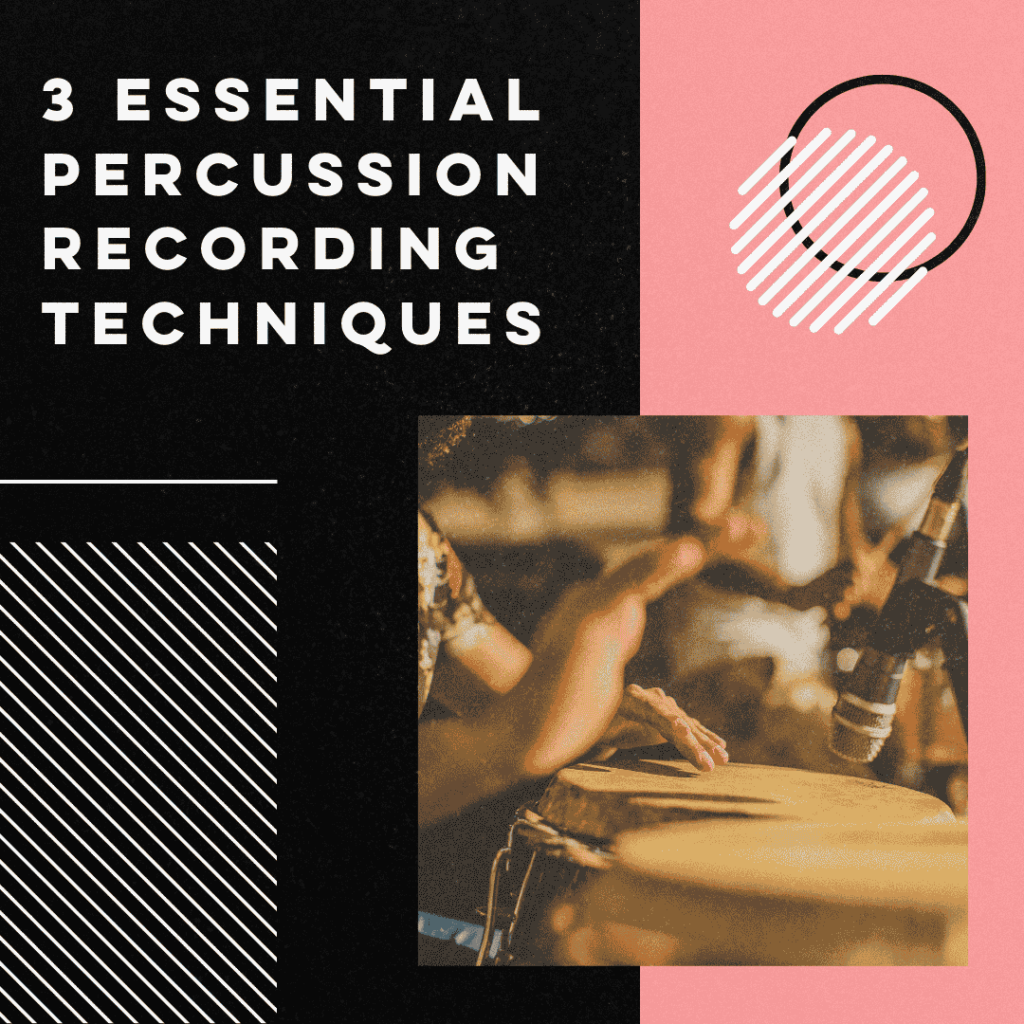Capturing the full dynamics and nuances of percussion instruments can make all the difference in a recording, whether you’re working on a tight pop mix or a spacious, atmospheric soundtrack. In this blog post, we’ll explore three essential techniques for recording percussion: overhead miking, close miking, and room miking. Each method has its strengths, and combining them can give you a rich, detailed recording with plenty of flexibility in the mix.
1. Overhead Miking: Natural Stereo Balance
How it works: The overhead miking technique involves placing two small diaphragm condenser microphones above your percussion setup. The mics are positioned to capture a balanced stereo image, giving you a natural representation of the instrument’s sound.
Best for: Overhead miking is perfect for situations where you want a clean and well-rounded stereo image of your percussion. This method captures the sound of the instruments as well as their spatial relationships within the kit, making it ideal for genres like jazz, world music, and acoustic settings where a natural sound is key.
Sound characteristics:
- Balanced stereo image: The microphones pick up the sound from across the entire percussion setup, creating a realistic sense of space and depth.
- Natural sound: This technique captures the nuances of the instruments without focusing too heavily on any one part of the setup, offering a cohesive sound that blends well in the mix.
- Great for ensembles: If you’re recording multiple percussion instruments or a larger setup, overhead miking helps ensure that everything is heard clearly and naturally.
2. Close Miking: Detailed and Focused
How it works: Close miking involves placing dynamic microphones near individual percussion instruments, focusing on specific elements of the kit. By positioning the mics closer to the sound source, you capture all the fine details and transients of the instruments.
Best for: This technique is ideal when you need to isolate specific percussion instruments, ensuring that every hit and transient is captured with precision. Close miking is commonly used in rock, pop, and electronic music, where clarity and punch are essential.
Sound characteristics:
- Isolated sound: Close miking minimizes bleed from other instruments, allowing you to focus on the specific percussion elements you’re recording.
- Detailed transients: Dynamic mics excel at capturing the fast, sharp attacks of percussion instruments, giving you a crisp, focused recording.
- Control in the mix: With close miking, you have greater control over each instrument’s level and tonal quality during post-production, making it easier to shape the final sound.
3. Room Miking: Spacious and Atmospheric
How it works: Room miking involves placing a single condenser microphone several meters away from the percussion setup. This technique captures the natural reverb and ambiance of the room, adding depth and space to your recording.
Best for: Room miking is perfect for genres that benefit from a more open, atmospheric sound, such as classical, ambient, or cinematic music. It works exceptionally well when combined with the other two techniques, adding dimension to your mix.
Sound characteristics:
- Room ambiance: By positioning the microphone at a distance, you capture the reflections and natural reverb of the space, which can add warmth and depth to the recording.
- Blends well with other techniques: Room miking is often used alongside overhead and close miking techniques to create a fuller, more immersive sound. The room mic captures the overall atmosphere, while the other mics focus on clarity and detail.
- Natural reverb: This technique gives your recording a sense of space and realism, making it sound as if the listener is in the room with the percussionist.
Combining Techniques for the Best Results
Each of these recording techniques offers unique benefits, and combining them can lead to a rich and versatile final mix. Here’s how you might approach it:
- Overhead miking gives you a balanced stereo image of your entire percussion setup.
- Close miking provides detailed recordings of individual instruments, giving you control over each element in the mix.
- Room miking adds depth and ambiance, bringing the recording to life with natural reverb and space.
By experimenting with these techniques, you can find the perfect combination that suits your recording environment and the sound you’re going for.
Conclusion
The key to recording percussion is to experiment with different microphone placements and techniques to capture the full range of dynamics and textures. Whether you’re aiming for a clean, detailed sound or a spacious, ambient recording, these three methods—overhead miking, close miking, and room miking—offer plenty of options to explore. Try them out, and let us know which one works best for you!


